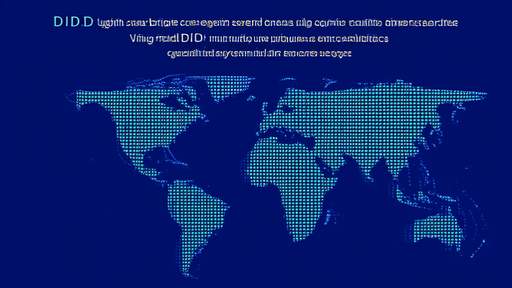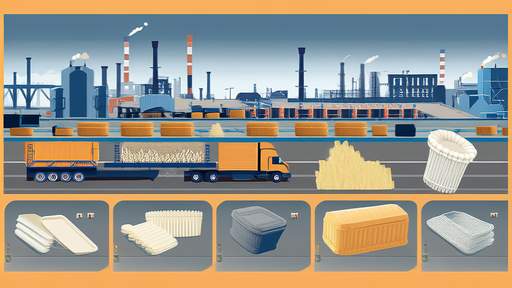The rapid advancement of gene-editing technologies in agriculture has ushered in a new era of crop production, bringing both unprecedented opportunities and complex challenges to the insurance industry. As genetically modified organisms (GMOs) give way to more precise gene-edited crops, insurers are grappling with how to accurately assess and price the risks associated with these innovations. Unlike traditional crop insurance models that rely on historical yield data and weather patterns, gene-edited crops require a fundamentally different approach that accounts for their unique biological characteristics and regulatory landscapes.
Understanding the unique risks of gene-edited crops is the first hurdle for insurance providers. While these crops offer benefits like drought resistance and pest tolerance, they also introduce novel liability scenarios. The precision of CRISPR and other gene-editing tools doesn't eliminate the possibility of unintended consequences, whether in the form of ecological impacts or unexpected interactions with other organisms. Insurers must consider not just field performance but also potential downstream effects throughout the supply chain, from seed producers to food manufacturers.
The regulatory environment adds another layer of complexity to insurance pricing. Different countries have adopted varying approaches to gene-edited crops, with some treating them similarly to conventional crops while others apply GMO-like restrictions. This patchwork of regulations affects everything from market access to liability frameworks, forcing insurers to develop flexible models that can adapt to different jurisdictional requirements. The evolving nature of these regulations means that today's risk assessment might not hold true tomorrow, requiring constant model adjustments.
Data scarcity presents perhaps the greatest challenge in developing accurate insurance models for gene-edited crops. Unlike traditional hybrids that have decades of performance history, most gene-edited varieties have only been in limited field trials. Insurers are forced to rely on experimental data, computer simulations, and expert opinions rather than the robust actuarial data that underpins conventional crop insurance. This uncertainty inevitably leads to higher premiums until sufficient real-world data becomes available.
Emerging technologies may hold the key to more precise risk assessment for these novel crops. Advanced monitoring systems combining satellite imagery, drone surveillance, and IoT sensors can provide real-time data on crop performance under various conditions. Machine learning algorithms are being developed to predict how gene-edited traits might interact with environmental factors. Some insurers are even exploring blockchain solutions to create immutable records of gene-edited crop performance across entire supply chains.
The liability landscape for gene-edited crops differs significantly from conventional agriculture. Questions about intellectual property rights, accidental cross-pollination, and trait performance guarantees create new dimensions of risk that must be quantified. Some industry experts suggest that traditional crop insurance might need to be supplemented with specialized liability coverage specifically designed for the gene-editing sector. This could include protection against regulatory changes, market rejection, or even activist destruction of experimental plots.
Pricing models are beginning to reflect the reduced uncertainty associated with gene-edited crops compared to first-generation GMOs. Because gene editing typically makes smaller, more precise changes to DNA without introducing foreign genes, many insurers view these crops as lower risk than transgenic varieties. This distinction is gradually being reflected in premium structures, with some insurers offering discounts for gene-edited crops that have undergone rigorous safety testing and regulatory review.
The insurance industry's approach to gene-edited crops will significantly influence their adoption rates among farmers. If premiums remain prohibitively high due to perceived risks, it could stifle innovation and limit access to these technologies for all but the largest agricultural operations. Conversely, appropriately priced insurance products could accelerate adoption by giving farmers the confidence to invest in these improved varieties. This delicate balance between risk management and technology promotion represents one of the most significant challenges facing agricultural insurers today.
Looking ahead, the development of gene-edited crop insurance models will require unprecedented collaboration between scientists, regulators, farmers, and insurers. Standardized risk assessment frameworks need to be developed that can accommodate the unique characteristics of these crops while providing sufficient protection for all stakeholders. As the technology matures and more data becomes available, insurance products will likely become more sophisticated, potentially incorporating elements like parametric triggers based on specific environmental conditions or trait performance metrics.
The evolution of insurance models for gene-edited crops represents a microcosm of the larger challenges posed by advanced biotechnologies in agriculture. Success will depend on the industry's ability to innovate its risk assessment methodologies while maintaining financial stability. Those insurers who can effectively navigate this complex landscape will be well positioned to support the next generation of agricultural innovation while protecting their own interests in an increasingly uncertain world.

By /Jun 3, 2025

By /Jun 3, 2025

By /Jun 3, 2025

By /Jun 3, 2025

By /Jun 3, 2025

By /Jun 3, 2025

By /Jun 3, 2025

By /Jun 3, 2025

By /Jun 3, 2025

By /Jun 3, 2025

By /Jun 3, 2025

By /Jun 3, 2025

By /Jun 3, 2025

By /Jun 3, 2025

By /Jun 3, 2025

By /Jun 3, 2025

By /Jun 3, 2025

By /Jun 3, 2025

By /Jun 3, 2025

By /Jun 3, 2025